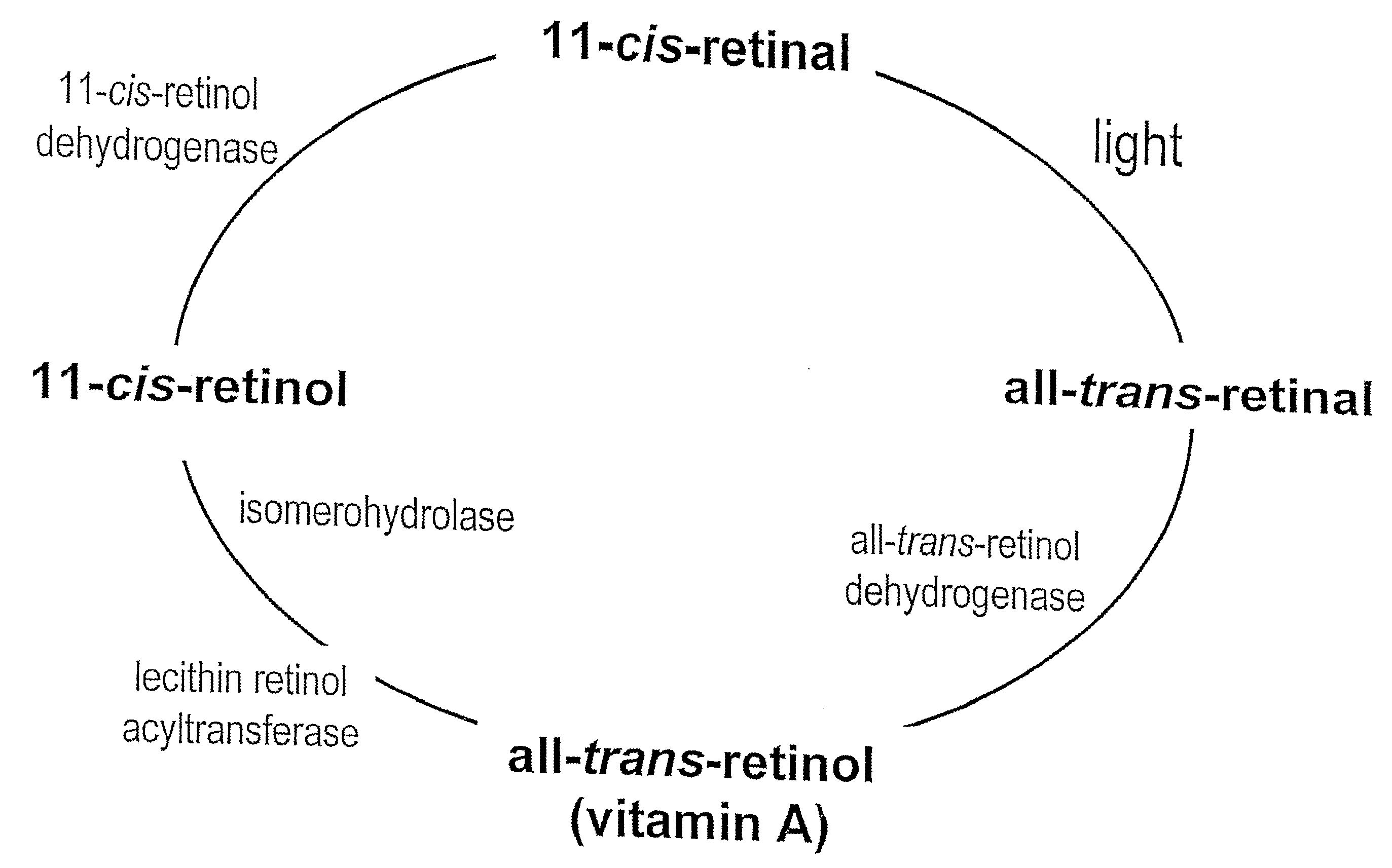Prevention of Retinopathy by Inhibition of the Visual Cycle
a visual cycle and retinopathy technology, applied in the direction of biocide, cardiovascular disorder, drug composition, etc., can solve the problems of preretinal hemorrhage, severe visual loss, and blurred vision, and achieve the effect of reducing patients' suffering
- Summary
- Abstract
- Description
- Claims
- Application Information
AI Technical Summary
Benefits of technology
Problems solved by technology
Method used
Image
Examples
example 1
Resistance to Retinal Ischemia 1 h After Intraperitoneal Isotretinoin
[0225] Purpose: To evaluate the efficacy of isotretinoin in the prevention of retinal functional loss following 1 h of ocular ischemia induced by elevation of the intraocular pressure beginning 1 h after the intraperitoneal administration of isotretinoin.
[0226] Material and methods: Of 12 Sprague-Dawley rats, 7 received intraperitoneal saline injection and 5 received intraperitoneal isotretinoin 5 mg / kg in dimethyl sulfoxide (DMSO) 1 h before intraocular pressure elevation during full anaesthesia using cannulation of the anterior chamber in one eye and infusion of balanced saline solution at a pressure of 110 mmHg. The fellow eye was not subjected to ischemia. The animals were kept in ambient room light before and during ischemia. Retinal function was assessed 1 week later by scotopic and mesopic full-field electroretinography (ERG). The study adhered to the ARVO resolution on animal welfare.
[0227] Results: All ...
example 2
Resistance to Retinal Ischemia 24 h After Intraperitoneal Isotretinoin
[0229] Purpose: To evaluate the efficacy of isotretinoin in the prevention of retinal functional loss following 1 h ischemia induced by elevation of the intraocular pressure beginning 18 h after the intraperitoneal administration of isotretinoin.
[0230] Material and methods: Intraperitoneal isotretinoin 5 mg / kg in dimethyl sulfoxide (DMSO) was given to 6 Sprague-Dawley rats 18 h before intraocular pressure elevation during general anesthesia using cannulation of the anterior chamber in one eye and infusion of balanced saline solution at a pressure of 110 mmHg. The fellow eye was not subjected to ischemia. The animals were kept in ambient room light before and during ischemia. Retinal function was assessed I week later by scotopic and mesopic full-field electroretinography (ERG). The study adhered to the ARVO resolution on animal welfare.
[0231] Results: All 6 eyes subjected to ischemia in isotretinoin-treated ani...
example 3
Reduction of Retinal Flow After Intraocular Administration of Isotretinoin
[0233] Purpose: To assess the effect of intravitreal isotretinoin on retinal vessel diameters in rats, the vein diameter acting as a marker of retinal flow and metabolism.
[0234] Methods: In 6 animals, one eye received a single intravitreal injection of isotretinoin 2.5 μg in 10 μl dimethyl sulfoxide (DMSO). The fellow eye received a placebo injection of 10 μl DMSO. Retinal vessel diameter was recorded 6 h later in both eyes after the rats had dark adapted using digital fundus photography in red illumination and assessed using computerized image analysis. All procedures were performed in general anesthesia and the study adhered to the ARVO resolution on animal welfare.
[0235] Results: Both eyes were intact in 4 animals, 1 eye in one animal suffering from retinal detachment and 1 eye in 1 animal from vitreous hemorrhage. In 4 isotretinoin-treated eyes a change in retinal vein diameter of −9% (SD 4.2%) was obse...
PUM
| Property | Measurement | Unit |
|---|---|---|
| Mechanical properties | aaaaa | aaaaa |
Abstract
Description
Claims
Application Information
 Login to View More
Login to View More - R&D
- Intellectual Property
- Life Sciences
- Materials
- Tech Scout
- Unparalleled Data Quality
- Higher Quality Content
- 60% Fewer Hallucinations
Browse by: Latest US Patents, China's latest patents, Technical Efficacy Thesaurus, Application Domain, Technology Topic, Popular Technical Reports.
© 2025 PatSnap. All rights reserved.Legal|Privacy policy|Modern Slavery Act Transparency Statement|Sitemap|About US| Contact US: help@patsnap.com



